Rösti - not as straightforward as you might think.
- rosemary
- Jun 19, 2023
- 5 min read
"no one, as far as I can tell, has come up with anything even vaguely resembling a definitive rösti recipe" Felicity Cloake

A rösti is just a potato fritter isn't it? Well yes and no - as this selection of Rainbow rösti from Taste demonstrates. And we are not even talking about Italian or French style authenticity here, even though what is shown here is definitely not authentic. The one sure thing I have gleaned from this particular investigation is that if indeed there is anything authentic about rösti it is that potatoes are involved.

Yes it is a Swiss dish - well I might come back to that, but as Felicity Cloake notes in her article on how to make the perfect rösti:
"it's almost as if the Swiss want to keep the recipe secret, tucked away in a subterranean vault, as establishing anything concrete about this Alpine favourite, from the type of potatoes used to the cooking method, is a feat akin to scaling the north face of the Eiger."
Which is sort of nice. People can get so hot under the collar about food authenticity sometimes. Suffice to say it's definitely a dish from the German part of Switzerland. They even call the divide between French and German Switzerland the Röstigraben, which means Rösti ditch. Which implies - as one writer said that the French are not into rösti. He said they have Pommes Dauphines instead - but really the only similarity there is potatoes and fried - because the potatoes are mashed and shaped into balls. Not the same thing at all.
Latkes and Hash browns however are another thing and easily confused with rösti. Here we have, on the left, Claudia Roden's Latkes and on the right Food 52's Hash browns.
There are definitely similarities. According to Recipe Tin Eats' Nagi Maehashi the differences are:
"Rostis (or properly spelt rösti), which originate from Switzerland, typically are pan fried in a medium(ish) skillet then cut up to serve as a side dish for a meal;
Hash browns are usually individual size – think Macca’s hash browns – and served for breakfast; and
Latkes are also individual size but usually bound with some egg and flour, and because of these additions, they are not as crispy – unless you basically deep fry them."
Truth to tell I'm not sure the is quite right about the hash browns. Indeed there seems to be even less agreement about hash browns than about rösti - they seem to be anything from a whole lot of chopped vegetables, mostly potato ('hash' after all is derived from the French 'hasher' meaning to chop), fried together in a pan, to the the pancake kind of thing shown above. She does seem to be right about the latkes though - eggs and flour are definitely involved, and are not in rösti.
So let's just stick to rösti. According to Felicity Cloake, what we are trying to achieve here is something: "Crisp on the outside, soft and meltingly, well, potato-ey within". And I have to say that Nagi Maehashi's results - both small and large, look pretty much spot on.
It's a good explanatory recipe with lots of little tips along the way - like this one.
"Don’t worry if your potatoes go brown / reddish while sitting around. This is just from oxidation (reaction of potato to air) and it’s all bluster; it doesn’t mean the potato is off. Once you start cooking, it will change back to white" Nagi Maehashi
But then again, Serious Eats, warned against the potatoes going brown.
It seems to me that the main controversies around making rösti are:
What potatoes do you use - floury or waxy? Opinion is very divided. They seem to think the waxy ones hold their flaky shape better.
Do you peel the potatoes or not? - Felicity Cloake, having tried with the skin and without says - "I'm astonished at how much flavour the skin gives the rösti"
Do you half-cook the potatoes before grating or not? Hmm. I think this is pretty even, with perhaps slightly more people going for the part cooking - something to do with getting rid of the moisture, which prevents the crispiness. And there's all sorts of stuff about squeezing out the moisture with one writer even going so far as to squeeze it all out and then putting some of it back in, which seemed very weird to me. You need the starch you see to hold it all together. Some more extreme cooks even said you should part cook the potatoes and chill in the fridge overnight before grating. Honestly - this is surely one of this rustic, home-cooked easily done things. But then, again, when I think about it, all those simple things - like boiling or poaching an egg are not that simple.
How thick should the pile of potatoes be in the pan? Well I suspect this may be another difference with the latkes which look thinner to me - and therefore crispier. Nagi Maehashi's large version is quite thick although you press down on it as you cook, and you cook it for a long time - 12 minutes each side she says, Felicity Cloake says 10 but I saw others say just 3. I suspect the trick is to cook it for a longish time so that the inside is cooked properly, but avoid burning the outside.
What fat? Goose fat say some purists. Well good luck with that one. Butter say others but add some oil or it will burn, or better still use clarified butter (ghee). Really there are a whole lot of suggestions but I have to say most went for the ghee.
There wasn't much enthusiasm for oven cooking - not as crisp - and, of course, there are now recipes for air fryer versions.

What actually started me on all this was this recipe in the current Coles Magazine from Michael Weldon who is a Coles Ambassador and an ex MasterChef contestant (twice). It's called Carisma potato rösti with hot-smoked salmon and herbs, thus publicising their 'exclusive' potatoes and the fact that a purchase will support Stephanie Alexander's Kitchen Foundation. Killing a couple of birds with one stone there publicity wise, as well as providing an inauthentic recipe for rösti. It caught my eye, because I confess that up till then I had thought that rösti were small not large. It's also inauthentic in that there are onions, garlic and thyme in with the potatoes. Besides it looked good.
The reason I thought that rösti were small because my first encounter with them was with Delia's Salmon rösti fish cakes which I have made. They also are not very authentic because the potato is mixed with salmon, so they are sort of fish cakes with grated rather than mashed potato, and I vaguely remember that I had enormous difficulty in keeping the little fritters together. So much so I have not made them again. She has a similar recipe for Rösti crab cakes, one with apples and another as a topping for a fish pie - which idea may have been copied by Rosie Sykes in her Fish pie with rösti topping.
In today's world, perhaps aided by the Swiss people's lack of guidance on the subject, the chefs of the world have adapted the recipe mostly by making these things with other vegetables, either alone or in conjunction. The only thing that binds them altogether - forgive the pun - is that the vegetables are grated. Somebody on the Taste website even made a Giant calzone rösti. Mostly though it's just other vegetables, topped with a variety of things from a blob of yoghurt to a salad. A bit like the toppings on soup. For example: Parsnip and potato rösti with watercress and hazelnut salad from Thomasina Miers and Courgette rösti with burrata and tomatoes from Nigel Slater.
Fraught with a number of potential disasters. Did I mention flipping it over halfway? Possible with small ones, but tricky with a big one. Nagi suggests using wooden board with a handle rather than a plate. And not healthy either, no matter how much salad you pile on top.
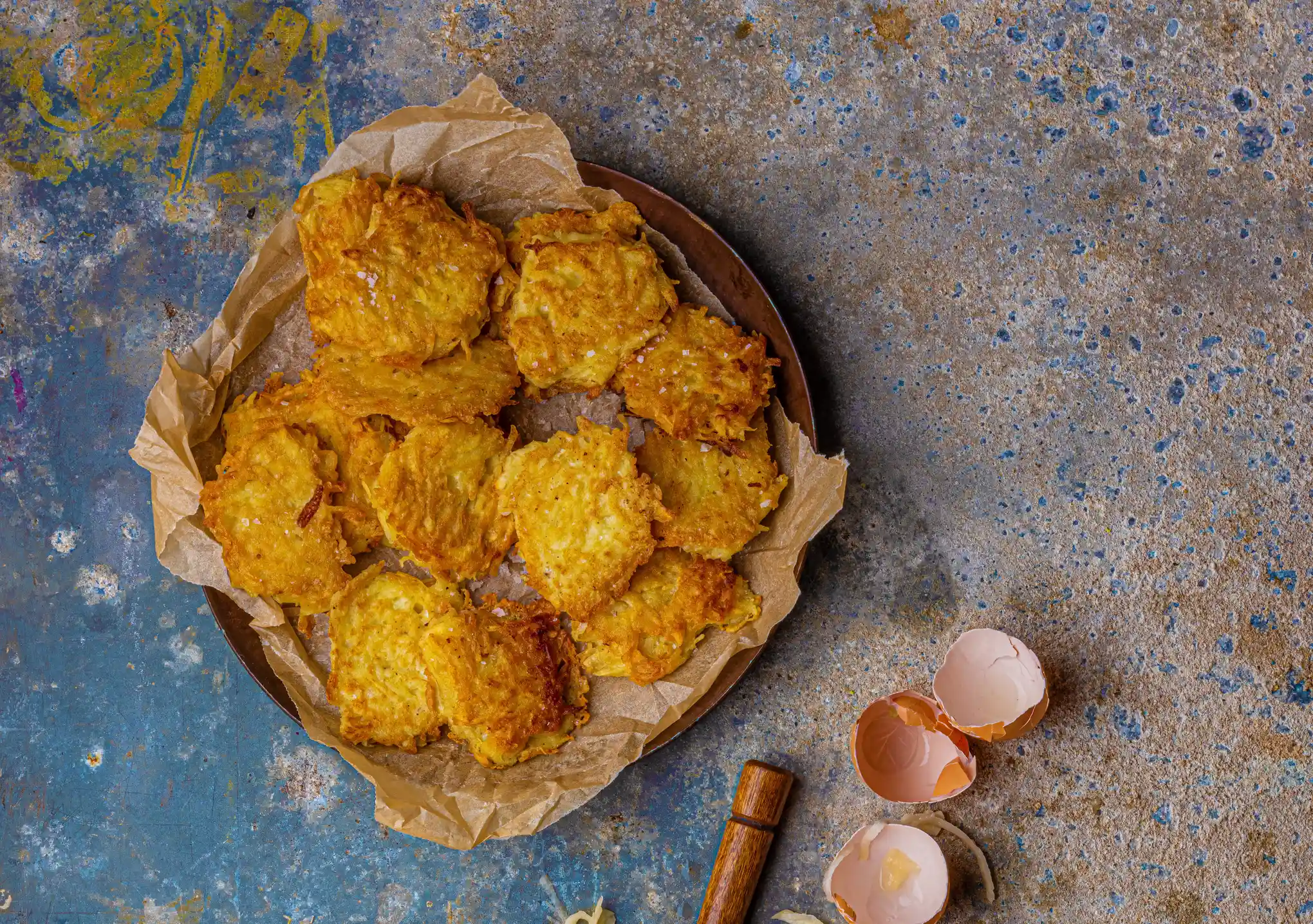


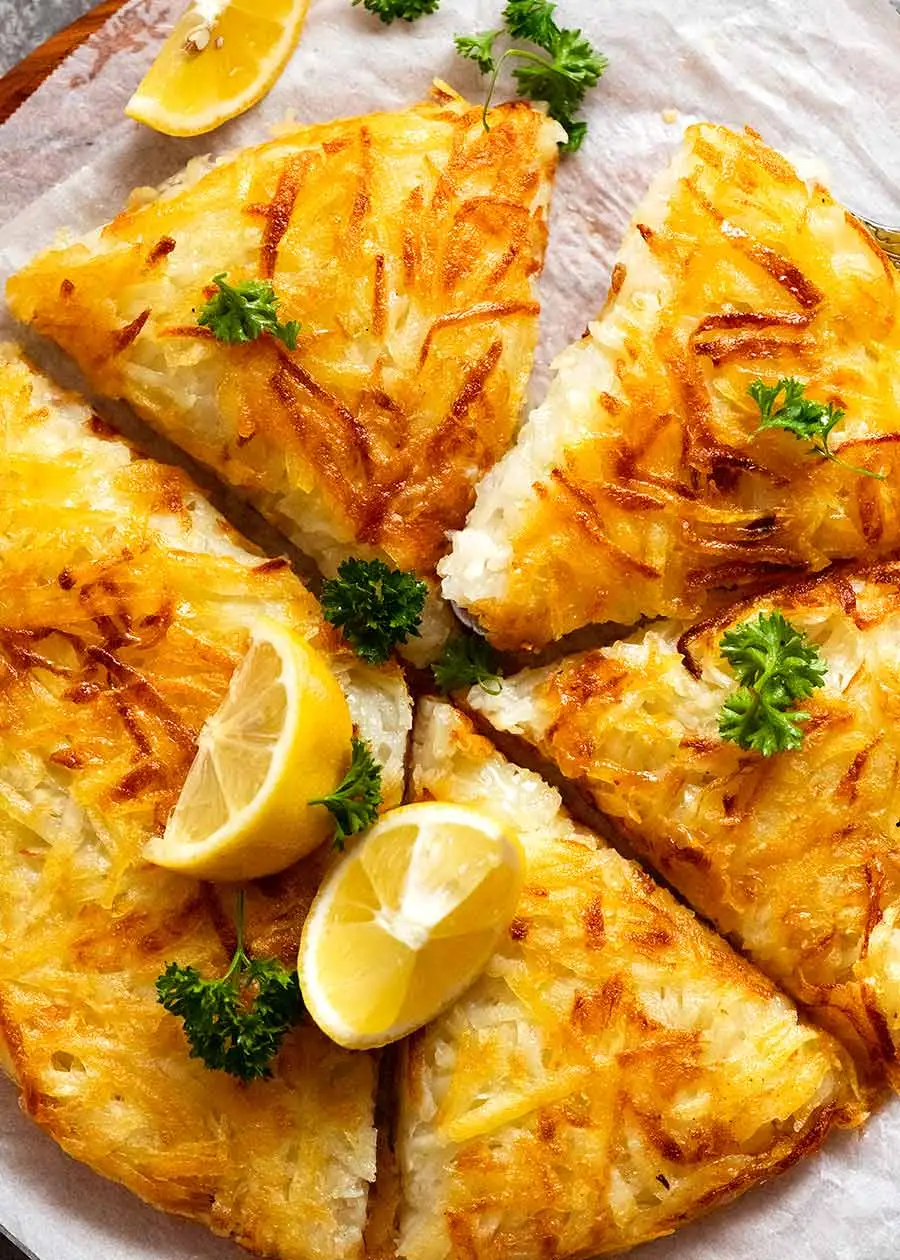
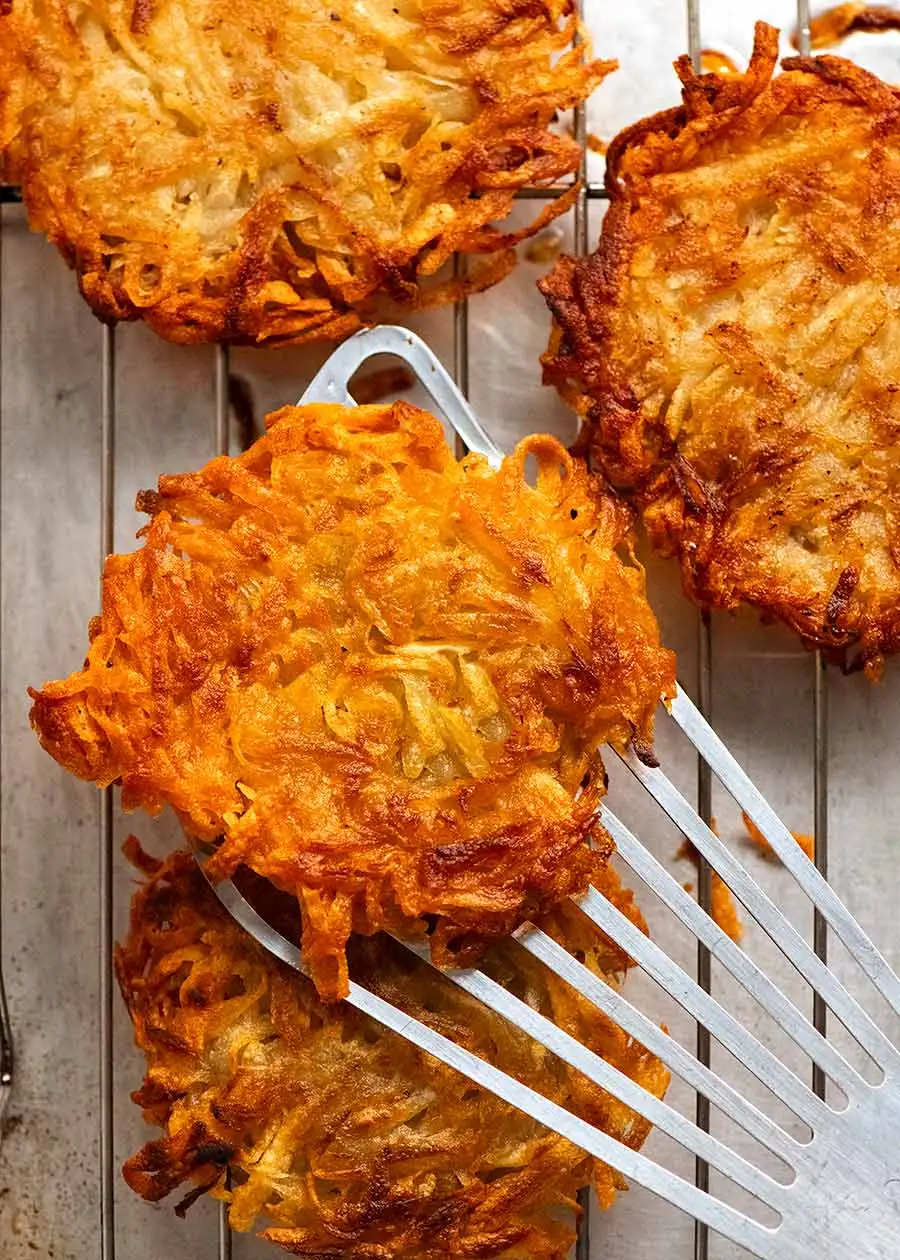

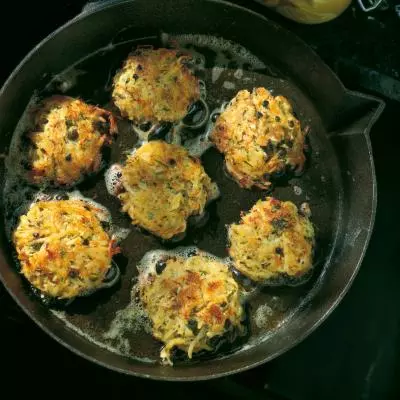
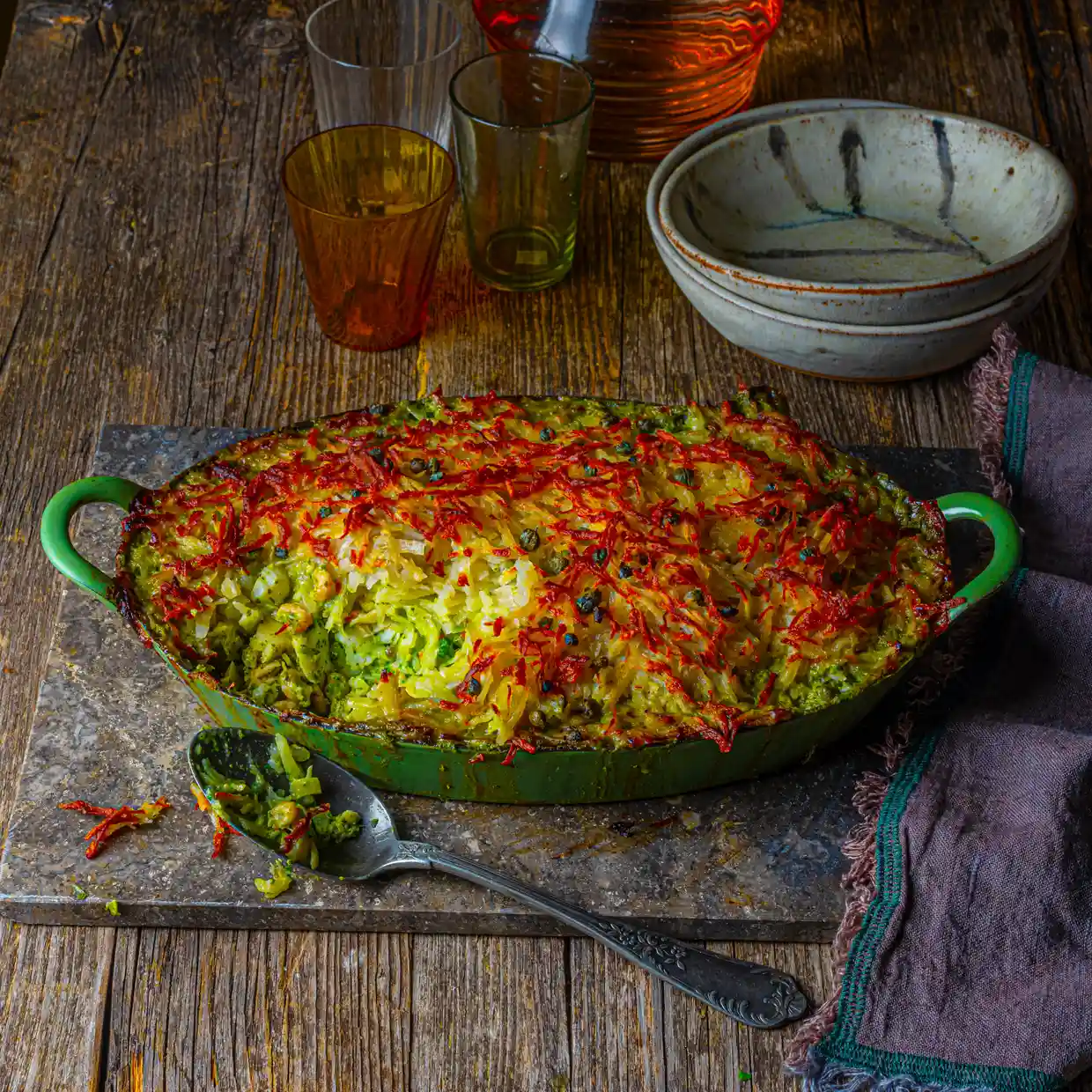



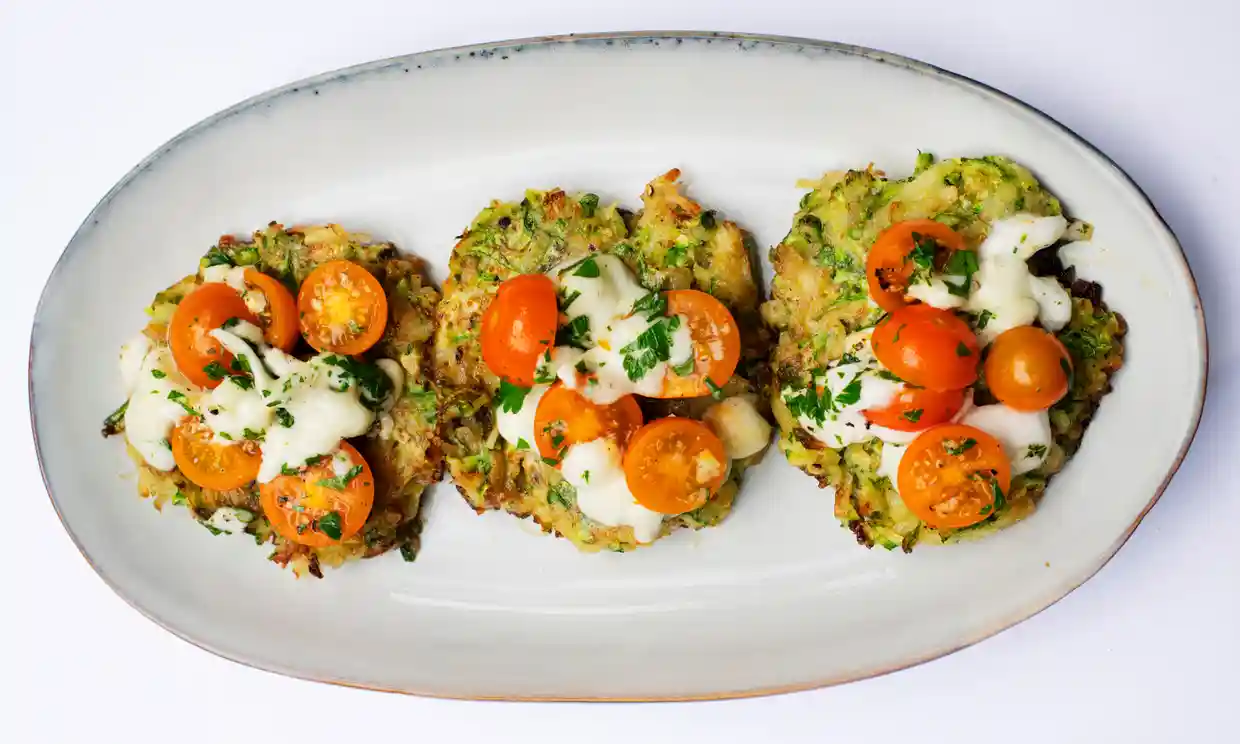



Comments